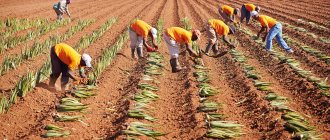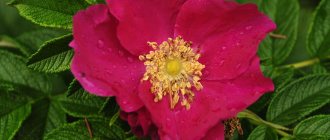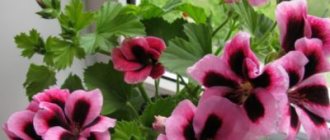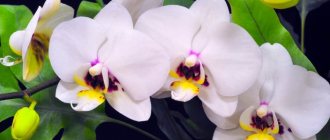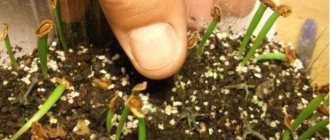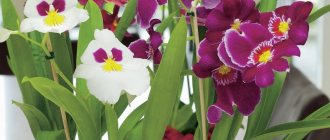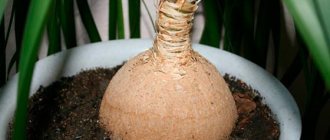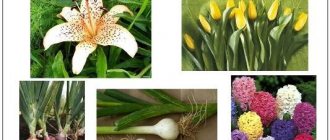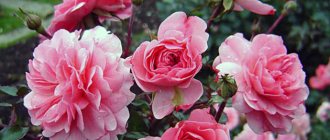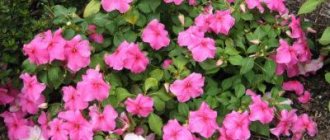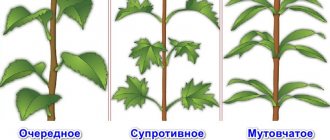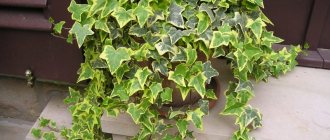Botanical description of asplenium
Asplenium is a perennial herbaceous plant belonging to the Kostentsov family. Asplenium is popularly called ossicle. It is a low spreading perennial plant with large leaves that lean in different directions. An indoor fern, in hot climates it can grow in open ground. The height of the bush does not exceed 50 cm. Wild shrubs are relatives of indoor asplenium and are larger in size. The length of the foliage of asplenium growing in the wild reaches 2 meters.
The crop has a poorly developed creeping or short rhizome located under the top layer of soil. In the natural environment, the rhizome of the kostenza is larger and more developed, going deep into the ground. Thus, the shrubs receive a sufficient amount of nutrients necessary for development.
Several spreading large leaves, collected in rosettes, extend from the base of the rhizome. The leaf blade is elongated, forked or pinnate. There are varieties with pinnate leaves dissected at the top. The leaf blade is bright green in color, even and smooth to the touch. The upper part of the leaf has a glossy tint, so the bushes shimmer in the sunlight. On the lower part of the leaf blade there are sporangia necessary for the propagation of the shrub. The leaves have small petioles that go into the ground. A network of veins is visible on the surface of the leaf plate.
Asplenium, due to its diversity of species, can take different forms and types of shrubs. The variety of shapes of the leaf plate and the size of the bush attract gardeners and landscape designers. Most types of asplenium have leaves with smooth edges, but in nature there are varieties with cut or torn edges, as well as jagged or sword-shaped.
Description
They are herbaceous perennial plants that can grow terrestrial or epiphytic. Among them there are evergreen herbs, shrubs and deciduous ones, having a very different rosette shape.
The leaves of ferns vary in shape: simple dissected, pinnate, whole, slightly fleecy and smooth. In shape they are xiphoid, triangular, fork-shaped. Sporangia are present on the underside of the leaves. After all, not a single variety of asplenium has flowers. Sporangia are reproductive organs that are located on forked veins. Each leaf is held on a dense petiole, smoothly turning into a leaf blade.
The rhizome of the plants is creeping or short, sometimes protruding above the ground, covered with soft scales.
The height of the fern is 30–90 cm, and with good care they can grow up to a meter.
Nidusili asplenium nest is compact and one of the most attractive among non-flowering perennials, with glossy sword-shaped leaves of a light green color. The length of the leaves does not exceed half a meter.
The rosette of the nesting variety of perennial resembles a nest or a bucket. Of the many types of fern, only a few are grown indoors.
Spreading
The southern regions of Africa are considered the natural habitat of the kostenza. In addition, different types of ferns can be found in different regions of the globe. Thus, in its natural environment, asplenium lives in the tropical climate of eastern Africa, Australia and New Zealand. You can also find wild shrubs in the northern part of India.
In temperate climates, asplenium grows as an indoor herbaceous plant. Since the perennial is not highly resistant to frost, asplenium is not grown in open ground. To grow asplenium in the wild, it is necessary to select hybrid varieties that can withstand the climatic conditions of the temperate zone.
Asplenium is unpretentious to the growing location and soil. Wild bushes grow on rocky or loose soil, rich in moisture and nutrients. At home, the plant grows actively in pots. An important condition for shrubs is constant air humidity and a hot climate, which allows greenery to grow in different directions.
Features of care
The indoor flower asplenium attracts lovers of plants of this type because it is unpretentious in care. Therefore, if you want to add spectacularly beautiful asplenium to your collection, caring for it at home will not bring unnecessary trouble. You just need to remember a few nuances.
Lighting
Although asplenium is a shade-loving plant, it requires enough light for its normal development. He feels more comfortable on windows facing east and west. However, the Kostenets does not like direct sunlight. When the sun hits the leaves, they can get burned, and prolonged exposure to the rays destroys the plant. It needs shading, but you can’t place a pot with it in the back of the room either. The plant stops developing and the leaves turn yellow.
The soil
Kostenets loves loose and slightly acidic soil. The soil must be nutritious and well-permeable to water and air. For perennials, you can use a special mixture for fern plants, which is sold in stores. This mixture is easy to prepare yourself. For it they take: leaf soil, peat and humus with coarse sand in the ratio 3:2:1:1. Instead of leaf soil with humus, you can use turf. Then it, sand and peat are taken equally. A little pre-crushed charcoal and sphagnum are added to the soil mixture.
Top dressing
The bone also needs to be fed only with the onset of spring and summer, that is, during the season of active development. Feed once every 14 days. For this purpose, complex mineral fertilizer mixtures are used. In autumn and winter, the plant does not need feeding.
An important point in introducing fertilizing is to pre-water the soil to avoid burning the roots.
Temperature and humidity
Asplenium fern is a heat-loving fern, so on summer days the temperature should not be below 20° C, and in winter it can be lowered to 18° C.
The plant requires high air humidity. This can be achieved in the same way as when growing other tropical exotics: pour small pebbles, expanded clay or moss into a container, into which you need to constantly add water. Also, the nesting fern can and should be sprayed in the morning using warm, settled water.
Popular types of indoor asplenium
The genus Asplenium has approximately 700 species of different ferns. Shrubs differ not only in shape, but also in size. In addition, there are hybrid varieties that grow in any conditions. In Russia you can find about a dozen species of Kostenets.
South Asian asplenium asplenium australasicum
Eastern representative of ferns. Wild shrubs native to Australia. In the natural environment, asplenium of this species reaches one and a half meters in height. The width of the leaves of this species does not exceed 20 cm. The foliage cuttings form a dense rosette at the base of the bush, forming a funnel.
The rhizomes of the ossicle are straight, going deep into the soil. The roots grow strongly in different directions, thus keeping the plant erect. The roots are dense and wide. The surface of the roots is covered with scales, from which adventitious roots of various shapes appear. Small roots are tangled together and form a dense network above the surface of the earth.
The leaves of the variety are entire, with smooth or serrated edges. The leaf blade has a rounded shape, reaching its maximum width in the middle of the plate. The end of the sheet is pointed or rounded. Linear spores are located at the bottom of the leaves. The spores are located mainly along the central vein.
Asplenium nesting asplenium nidus
The variety is an indoor variety of Kostenza. In its natural environment, the crop grows in the humid tropics, so for development in indoor conditions it is necessary to maximally adjust the climate suitable for the shrub. You can even find such a plant in the tropics growing on the stems and trunks of some trees.
The plant has a large, well-developed rhizome that goes deep into the substrate. Thus, the fern receives a sufficient amount of nutrients necessary for the active growth and development of the bush. At the base of the rhizome is a dense, often tangled rosette of leaf petioles. The rosette is entangled by adventitious roots, forming a kind of nest.
Asplenium leaves are petiolate, solid rounded in shape. The edges of the foliage are smooth, the end is pointed. The leaf blade is light green, closer to a light green shade. In the middle of the leaf blade you can see a brown central vein, on the underside of which sporangia are located. When grown indoors, nesting asplenium is small in size, creating a pleasant appearance.
Asplenium scolopendrium
The characteristics of this species are similar to the previous type of asplenium. The peculiarity lies in the growing conditions. The natural habitat of the culture is considered to be Germany and England, where shrubs grow in deciduous forests. Only asplenium hybrids are grown under artificial conditions.
You might be interested: Hibiscus is a flower that foretells death or brings benefits to people
The rhizome of the fern is thick and creeping. Most of the central roots and adventitious roots are located above the surface of the ground, entangled with a rosette of leaves. Erect leaves extend from the base of the roots, shaped like a belt.
The leaf plate has wavy edges, so the bush looks quite decorative. The leaves are light green in color, with smooth edges and a smooth end. In the center of the leaf plate there is a central vein, externally dividing the leaf into two parts.
Asplenium bulbiferum
A representative of deciduous asplenium, growing wild in Australia and India. Asplenium is small in size. The length of the leaf plate usually does not exceed 50 cm. At the same time, the leaves are quite wide - up to 20 cm. The fern is painted in light green tones. The peculiarity of the bush is the presence of fairly long petioles on the foliage, which can exceed 30 cm.
The leaves of the variety are smooth and round in shape. The upper part of the sheet plate has a glossy tint. The lower part of the leaves is a lighter shade. From below, the leaf blade has sporangia, which are located along the veins, on both sides of the plate. In addition, this species has brood buds that grow on the tips of the foliage. The leaves, forming a rosette at the base, bend their ends in the opposite direction, hanging down to the ground.
The culture is considered quite frost-resistant, so it can grow in temperate climates. Asplenium grows as a houseplant; it is planted in greenhouses, along the edges of alpine hills.
Asplenium viviparum asplenium viviparum
Heat-loving representative of Kostenets. The plant is native to the southern regions of Madagascar. A perennial species that grows in fertile soil with plenty of minerals. The shrub is evergreen and forms a basal rosette for several years.
The culture has a creeping rhizome growing in different directions. From the base of the central root, adventitious branches emerge, which become entangled and form a dense fabric near the ground. From the base of the rhizome a rosette of leaf petioles is formed.
The leaves of Asplenium viviparous are located on short petioles. Unlike many varieties, the leaf blade is not solid, but is divided into two or more lobes. The shrub is quite small in size, the length of the leaves does not exceed 60 cm, the width in the center is about 15 cm. The length of the leaves and their thinness do not allow the foliage to support its weight, therefore, as it grows, the leaf plates bend to the ground, forming an arc.
On the surface of the inner part of the leaf you can see sporangia, which are located on both lobes of the leaf blade. After sporangia fall into the ground, they quickly take root and germinate. In addition, along the edges of the leaves there are brood buds, which also easily germinate and form a new shrub.
Carrot leaf asplenium daucifolium
It is a perennial native to Madagascar. The plant lives in a tropical humid climate. Hybrids take root well in greenhouses and alpine hills. The shrub is small in size. The height of the crop living in the wild does not exceed a meter, and the height of domestic varieties reaches 50 cm.
The variety is represented by leaves with short petioles, forming a dense rosette at the base. The leaves are segmented and form a dense nest inside the bush. The abundance of segments makes the species similar to ordinary ferns growing in temperate climates. Each segment is represented by small sword-shaped leaves. The segment length reaches 3 cm and width up to 5 mm. The segments are attached to the main central core of the sheet.
The outer surface of the foliage is painted in dark green tones. While the lower part of the foliage has a lighter base. The brood buds are located on the upper part, and sporangia are located on the lower part. Sorus are located along the edges of the segmental part of the leaf.
Asplenium hairy asplenium trichomanes
The bone of this type has a peculiar smell. The peculiarity of the plant is the ability to take on different leaf shapes. It is a small shrub, the height of which does not exceed 50 cm. The rhizome of the plant is short, covered with small black scales.
The crop has evergreen foliage. The leaves are divided into many segments. The base of the leaves forms a brown rosette. This is due to the fact that the central part of the leaf plate is colored brown. The surface of the petioles and the central part of the leaf is glossy. Each segment is sessile and round in shape. There are varieties with dissected or smooth edges of the segments.
Unlike its relatives, culture has an economic purpose. The beneficial properties of the chemical composition of the plant allow it to be used as a remedy for hair loss. The plant is also used to create decorations. In folk medicine, the culture is used in India as an anti-bronchitis remedy, a laxative and a diuretic.
Asplenium crispy wave
An unpretentious small shrub. Used as indoor culture. The ossicle of this species is quite resistant to frost, so it can grow in open ground. However, to prevent freezing, the crop is covered with insulation for the winter. In addition, the culture can often be found indoors.
The leaves of the shrub have a rich green color. The leaf plate is wavy in shape, similar to corrugated paper. The leaves are soft to the touch, with smooth edges and a visible central vein. The upper part of the leaf plate is glossy. Sporangia are located on the lower part of the leaf.
Asplenium nidus
The plant is represented by a variety of nest-shaped stones. Under natural conditions, the shrub grows on trees and rocky surfaces. The culture has good decorative qualities, since the appearance of the plant has rounded, even outlines. The shrub is quite fragile, the leaves are delicate and break quickly.
Asplenium is small in size. The height of the bush does not exceed 60 cm, so the crop is often planted in indoor pots. In temperate climates, the crop is quite rare, since the fern needs a large amount of light all year round for active growth.
You may be interested in: Geranium - a variety of varieties and colors in the decor of a room and garden
The leaves are entire, petiolate, light green in color. In some places you can see shades of purple on the leaves, which makes the shrub more decorative. The central vein of the leaves is also purple. The leaves are erect and grow vertically upward, so the bush has an even shape.
Asplenium osaka
The peculiarity of the variety is its fastidiousness. The culture does not tolerate moisture getting inside the root rosette. If water stays inside the foliage for a long time, the fronds quickly die off. The shrub is represented by fairly large leaves, up to a meter long.
The leaves are rich green in color, with smooth edges, wavy in places. The central part of the leaf blade is brown or burgundy. leaf shape is pinnate. The leaves are located on short petioles and bend towards the ground as they grow.
Types of home asplenium with photos and names
Asplenium nidus
The most common epiphyte in indoor floriculture. The leaves are long, grow up to 1.5 meters, and are quite wide. The root system is powerful with a large number of tangled roots. The decorative qualities of the plant are enhanced by a purple stripe in the center of each leaf.
Asplenium viviparum
The large wavy light green leaves of this asplenium are collected in a narrow rosette. Each shoot has many small narrow segments no more than 1 cm long. An adult plant forms brood buds on the edges of the leaves.
Asplenium bulbiferum
A species with high decorative qualities. The leaves are up to 120 cm long and hang beautifully, forming a lush cap around the pot. The segments of each leaf are wide. The plant takes root very quickly when planted and has a high growth rate.
Asplenium dimorphum
A very common species in indoor floriculture. It is used to decorate shaded areas, and is also grown in greenhouses and winter gardens. It has large, dissected leaves up to 1 m long.
Care
Asplenium ferns are actively grown indoors. However, to create and maintain a decorative type of crop, several important rules for caring for shrubs are necessary. For ferns, it is important to create habitat conditions that are as close to natural as possible.
Features of care after purchase
Immediately after purchasing a fern, the plant must be transplanted into a new pot. This is necessary to create more comfortable conditions for the plant. An important rule for replanting is to preserve the earthen clod, so the crop is transferred from one pot to another.
As a substrate, you should mix leaf soil, humus, pine bark and coconut soil. When replanting, it is necessary to create an optimal drainage layer at the bottom of the pot in the new pot. Thus, moisture will not stagnate in the soil, and rotting of the rhizome is prevented.
Lighting
For the kostenza, it is important that the foliage be constantly exposed to scattered sunlight. Direct rays leave burns on the fern, so the crop prefers to live in shaded places. In indoor conditions, the optimal place for planting ferns is the eastern or western part of the room.
Temperature
To grow a crop in a home environment, it is important to create temperature conditions that are comfortable for the bush. So, the bone feels normal at temperatures up to 27 degrees above zero. Frost-resistant varieties can grow actively at temperatures up to 10 degrees below zero. When grown indoors, in winter the air temperature is reduced to 15-18 degrees so that the fern can rest before the new season.
Humidity
Wild shrubs live in places of high air humidity. Therefore, when growing indoors, it is necessary to provide the crop with increased air humidity. In room conditions, you can create the necessary humidity by placing a container of water next to the plant. Also, the air around the bush is regularly sprayed with a spray bottle.
Do not place the pot next to heating devices. Dry air contributes to the rapid death of shrub foliage. If dry leaves are found on the plant, you need to move the pot to another place.
Watering
For ferns, it is important to choose the optimal watering regime, since the amount of water is considered an important component of the normal growth and development of the bush. Asplenium is a moisture-loving plant, but does not tolerate stagnation of water in the roots. Therefore, it is important to create a normal drainage layer at the bottom of the pot, which will prevent the development of rotting.
The substrate in which the fern is grown must be constantly moist. However, you cannot create dampness inside the soil. Therefore, when growing asplenium indoors, pour a generous amount of water into a tray under the pot. This way the roots absorb the required amount of moisture.
In winter, the frequency of watering asplenium is reduced to 1-2 times a week. However, the volume of water increases significantly. Thus, the plant does not dry out and rests peacefully from active growth.
Top dressing
Asplenium needs regular fertilization with diluted fertilizers. When choosing fertilizer, preference is given to fertilizers for indoor plants that contain the optimal amount of minerals and nitrogen. It is important to understand that fern does not require a large amount of elements for growth, so the dosage indicated on the package is halved.
Fertilizing is carried out twice a year - in spring, after the onset of constant warmth, and in autumn, with the onset of frost. Feeding the shrub should be done very carefully, pouring fertilizer into the pan along with the settled water.
The soil
Ferns need a nutritious and light substrate in which the plant's roots can breathe. Therefore, experienced gardeners create a mixture from soil. The optimal substrate for growing asplenium is considered to be a mixture of equal parts of turf soil, leaf soil, coconut substrate and humus. There should be a high-quality drainage layer at the bottom of the pot.
Pot
It is necessary to carefully approach the choice of a pot for bones. Adequate space for rhizomes is important for the plant. However, in large pots, the crop does not pick up greens well. Tall and narrow pots are considered optimal, in which the roots will be located in a small volume of substrate.
Transfer
Aspleniums do not require frequent transplantation. the plant is placed in new pots no more often than once every two years. Young individuals are transplanted immediately after purchasing the crop and as the pot is filled with roots.
Transplantation is carried out by transferring the plant from one pot to another. When replanting, it is necessary to preserve the maximum amount of soil on the roots of the plant. In addition, it is important not to touch or break the adventitious roots of the crop. After transplantation, the crop is watered abundantly.
When it blooms
Asplenium is not a flowering plant. The decorative purpose of the plant is due to the abundant foliage and neat forms of the bush.
Trimming
Asplenium pruning is carried out only when necessary. In spring and autumn, sanitary pruning of dry foliage of the crop is carried out. The bone has neat dimensions, so there is no need to shape the culture.
You may be interested in: Delosperma
Spraying
Spraying is an important component for creating air humidity. However, it is worth understanding that moisture should not enter and remain in the outlet, since many varieties do not tolerate stagnation of moisture in the plant. Therefore, spraying is carried out carefully, trying not to spray water over the bush itself.
Possible problems
When caring for asplenium, some problems may arise associated with improper care of the shrub. So, when the crop is exposed to direct sunlight, burns quickly form on the foliage. At the same time, the leaves become spotted yellow. If the problem is not corrected in time, the foliage withers and the bush dies.
Ferns do not tolerate stagnation of moisture in the soil. The first signs of rot on the roots are wilting of the foliage and a faded appearance of the plant. If the plant is severely affected by root rot, the plant cannot be saved. If the asplenium has just begun to rot in constantly damp soil, it is worth transplanting the shrub to a new place with a large amount of drainage layer.
When air humidity is low, the tips of the leaves begin to dry out. After eliminating the problem and normalizing conditions, you will notice that the plant is gaining growth quite quickly. At low air temperatures, asplenium leaves curl.
Some types
Bulbous has a very beautiful bush, reaching a height of about a meter. The perennial is distinguished by spreading, feathery, strongly dissected leaves and dark coloring. At the base of the leaves, brood bulbs grow, quickly growing and falling off. Falling onto damp soil, the bulbs sprout. When the seedlings from the bulbs grow, they are transplanted. Some of the plants can be left in an old pot to create a full bush.
The South Asian perennial is distinguished by its small height and entire leaves, which are leathery to the touch and wavy in appearance. Their width is approximately twenty centimeters, and the color is light, bright green, with a purple vein visible in the center of the leaf. The rosette of the bush is dense, but rather narrow - funnel-shaped. The root of this variety is also different; it is straight and thick, covered with small scales. Many small adventitious roots, very tangled, extend from the root.
The scolopendra kostenza variety has a glossy leaf surface, a solid belt-like shape and a light, bright green hue. The edges of the leaves are wavy or even slightly curly. During development, the leaves, initially standing vertically, gradually lower and take on an arched position. The length of the leaf blades does not exceed 40 cm. The plant is popularly called “centipede”. The perennial, of course, attracts lovers of indoor ferns with its short stature, but this shrub has one drawback - it is very delicate. You can’t touch it too much; frequent touching will kill the plant.
Wintering
Asplenium is a heat-loving plant, so for growing in temperate climates, care must be taken to keep the shrub warm even in winter. In addition, it is necessary to prepare the bone for wintering.
In the fall, the number of waterings of the crop is gradually reduced, while maintaining the amount of water poured into the pan. The plant is gradually shaded and the amount of moisture in the air is reduced. For winter crops, the relative air humidity should be within 50%.
Asplenium is kept at a temperature of 15-18 degrees in winter. At the same time, culture slows down growth and development. The formation of sporangia on the foliage disappears. With the onset of warmth, the bone returns to active growth and development.
Varieties that can be kept in an apartment
There are about 700 different species of Asplenium, many of which are actively bred at home. Of these, flower growers identify several of the most popular ferns:
- nesting (Asplenium nidus);
- viviparous (Asplenium viviparum);
- bulbous (Asplenium bulbiferum);
- parvati (Asplenium Parvati);
- hair-like (Asplenium Trichomanes);
- Asplenium Crispy Wave;
- scolopendra (Asplenium Scolopendrium).
Read more about the varieties of asplenium fern here.
Reproduction of asplenium
If necessary, indoor varieties of asplenium can be propagated in three ways. Most often, brood buds are used for propagation of ossicles. Reproduction through spores and rhizome division is also important. Each division method differs in the speed at which new plants appear and the characteristics of caring for the sprouts.
Brood buds
Wild varieties of asplenium often reproduce using brood buds. They form on the top of the leaves. After falling to the ground, the buds quickly take root, giving rise to new crops.
To propagate asplenium using brood buds, you need to bury a piece of the leaf on which the bud is located in the ground. After planting, the crop is taken care of as usual, no different from an adult plant. After rooting, the sprouts can be transplanted to a permanent habitat.
Rhizome division
It is worth dividing the asplenium rhizome only when a large number of divisions have appeared on the adult individual. Having examined the root during transplantation, it is necessary to note the most convenient growth points in terms of location. During transplantation in the spring, these parts of the plant are separated from the mother and transplanted to a permanent habitat. As a rule, cuttings quickly gain growth and take root. It is important to understand that young plants cannot withstand low temperatures and drafts. Therefore, after planting, the crop is provided with warmth and good lighting.
Dividing the rhizome is painful for the plant, so when cutting the roots, the pruning area is treated with charcoal or a root growth agent. After planting, the plant first grows rhizomes and then produces foliage. Therefore, when propagating by dividing the rhizome, there is no need to choose a large pot right away; it is better to replant the plant after a year.
Controversy
Asplenium can be propagated using spores formed on the lower part of the leaf. The procedure is carried out in the spring, after the first spores appear. The optimal temperature for planting sporangia is considered to be room temperature.
To sow sporangia, the fern leaf is carefully trimmed, and the spores from it are scraped onto paper. You can try to remove the spores without cutting the leaf. Sowing of spores is carried out in disinfected soil that has undergone heat treatment in the oven. After abundant watering of the soil, the spores are evenly distributed on the soil surface. After sowing, for better germination, the spores are covered with glass or film to form condensation. The resulting container is placed in a dark, warm place until new shoots appear.
After the sprouts appear, the glass is removed. On average, spores sprout approximately 12 weeks after planting. After the seedlings appear, the container is transferred to a warm, illuminated place. Provide regular spraying of the crop. Grown crops can be planted in a permanent place.
Asplenium flower: breeding
Reproduction occurs in several ways: by dividing the bush, spores and brood buds:
- Dividing the bush is the easiest way to propagate a plant. Mature overgrown crops are divided mainly during the spring replanting period. In this case, you need to pay attention to growth points. When there are few of them, it is not recommended to divide. The flower is removed from the container, cleaned of the soil clod, the roots are cut into several lobes with a clean, sharpened knife, which are planted in an individual pot with a suitable soil mixture and watered. After the procedure, young specimens stand still for a month and do not grow, undergoing adaptation. During this period, it is recommended to fertilize using the foliar method.
- Reproduction by spores is considered the most difficult and time-consuming. To do this, select the largest leaf, cut it off and collect the spores, scraping them onto paper. Next, sowing is done in pre-sterilized soil. Since this procedure is performed at the beginning of spring, heated nurseries are used, the average temperature in which should be +22 degrees Celsius. These are ideal conditions for germination. Every day the nursery is ventilated and the soil is moistened. The first shoots can be observed only after a few months. Before this, the landing is kept in the dark. After germination, the greenhouse is transferred to a warm, illuminated place. After a while, the seedlings are thinned out, keeping a distance between them of about 3 centimeters. Thirty days after thinning, they need to be transplanted several at a time into small pots.
- Reproduction by buds. It consists of breaking off brood buds (small bulbs appearing at the ends of the leaves) and planting them in separate containers. This propagation method also uses a heated greenhouse, which is ventilated and moistened. In cases where the buds have fallen off on their own and have already taken root, they are simply transplanted.
Diseases and pests of asplenium
Most often, the plant is affected by pathologies such as gray rot and leaf bacteriosis. These pathologies are associated with improper plant care. In this case, dry, limp foliage appears. To eliminate the problem, reduce fern watering and normalize the volume of infused water.
Also, foliage is often affected by diseases such as phyllosticta and taffina. The plant quickly withers and dies. Timely treatments with fungicides help correct the situation. In addition, the appearance of spots on the plant may be associated with nematode damage. In this case, it is almost impossible to save the plant.
Pests and methods of disposal
Brown spots are a sign of damage to the plant by a nematode . With such an infection, nidus is usually thrown away, because it is almost impossible to fight such a disease.
In the case of chronically high humidity, the fern is often attacked by mosquitoes and thrips. For this infestation, treatment should include spraying with insecticides and eliminating the cause that led to the appearance of thrips.
Scale insects and spider mites also appear with improper care. They quickly suck the juice out of the plant and cause the leaves to fall and subsequently die. When scale insects appear, it is necessary to spray the leaves with an atellic solution, which is applied in the proportion indicated in the instructions.
The perennial does not greatly burden the care of its owners. Asplenium nest, like other ferns, never has flowers, but it interests many flower lovers.
Application
The plant is widely used to decorate rooms. You can meet asplenium in greenhouses and on alpine slides. Since it is quite difficult to grow kostenets, the plant is rarely used for growing in open ground. However, in the room the plant combines well with other plants, including succulents and flowering shrubs.
Some varieties of asplenium are used in folk medicine. In India, fern juice is used as a bronchodilator. Also, the chemical composition of the plant allows it to be used as a strong diuretic and a cure for diarrhea.
Varieties of Asplenium
Types of asplenium:
- Asplenium viviparous;
- Asplenium crispy;
- Asplenium anticum;
- Asplenium nidus;
And there are many more varieties that are famous for their beauty and ease of care.
Asplenium viviparous fern
This plant variety is native to the wild island of Madagascar (like milkweed). It is not so surprising that the asplenium is similar to those that grow there. It has leaves of average length 20 - 25 centimeters, which spread on both sides. From each leaf there are several more narrow segments that stick out in different directions. Their width is within 15 centimeters. They have a bright green color with a yellowish tint. The sori are located on the inside of the leaves in their lower part. The plant reproduces with their help.
Green Asplenium Krispi
This variety differs from others in that it is the most unpretentious, so this is what you can see in most housewives in the house. It reaches a height of 60 centimeters. Its leaves are smooth, elastic and fleshy. They have a somewhat corrugated shape and are twisted like a spiral. The color is rich, dark green. The width of each sheet is about 15 centimeters.
Asplenium anticum plant
It is not particularly common, like many other varieties of asplenium. This depends on the fact that it is not very common and can rarely be seen on sale. Therefore, you will find it only among true lovers of this plant. The length reaches 100 centimeters, the leaves are large and fleshy. Their width is 15 - 20 centimeters. The color is bright green with a silver tint. The edges of the leaves are grooved. The second name of the plant is Asplenium Osaka.
Fern asplenium nidus
The second name of this variety is nesting asplenium, it received it because of its compact structure. Its leaves are small, reach 50 centimeters in height, and spread in different directions. They have a wavy structure on the side surfaces. The color is bright green with a silver tint. The width of the leaves is up to 15 centimeters.
Pot and soil
The Asplenium container must have enough space for the rhizome to develop. At the same time, in pots that are too large, the fern begins to intensively grow roots to the detriment of the growth and development of leaves. Therefore, narrow and tall vessels are considered the best option.
Ferns prefer well-drained, loose soil with low acidity. When preparing it yourself, it is recommended to mix several components in equal parts: peat, sand, turf and leaf soil.
Maintenance and care of asplenium at home
How to properly care for asplenium? This plant is resistant to adverse factors and easy to grow. The main requirements are high air humidity and proper watering.
- Lighting. Asplenium does not need bright light. It can be grown in a north-facing window or under artificial light. In winter, it is recommended to move the pot from the window to a more shaded place.
- Temperature . Sensitive to temperature. Sudden temperature changes and drafts should be avoided. Optimal values are around 18-20°C. It can withstand a slight increase in temperature. Most species cannot withstand extreme cold.
- Watering. Asplenium should be watered regularly, but in moderation. Avoid sudden changes in soil moisture - the soil should not dry out or be too damp. Use bottom watering - place the pot in a pan of water until the soil is saturated with moisture. Avoid getting drops of water on the leaf rosette. In winter, watering is reduced, but not stopped completely.
- Humidity . The optimal humidity level is 60%. Regular spraying is required. The pot is placed in a tray with wet filler - decorative pebbles, expanded clay, moss. For spraying, choose the smallest sprayer; do not spray into the center of the outlet. Use warm, pre-settled water. In cool weather, spraying is not carried out.
- The soil . Young specimens are planted in nutrient soil. A good combination is peat, leaf soil, humus and sand. In the soil for adult plants, turf, crushed coal and sphagnum are added to the same components.
- Feeding. Alternate mineral and organic fertilizers. They give preference to products for decorative foliage crops. They are applied only in spring and summer; fertilizing is not needed in winter. You can feed once every two weeks with a low concentration solution. The dosage is reduced by half compared to the recommendations indicated on the package.
- Transplant. It is recommended to transplant the asplenium into another pot as the roots grow. Replanting is not necessary as long as they fit in the container. During transplantation, the roots are completely freed from the old soil and carefully inspected. Dried and rotten areas are carefully trimmed. Roots regenerate slowly, so pruning should be moderate. The diameter of the pot is increased slightly. The optimal shape is a low but wide container.
- Trimming. From time to time it is necessary to trim the asplenium. Remove old, damaged leaves so that they do not interfere with the growth of young ones and do not disturb the decorative appearance of the bush.
Dividing the bush
The division of the bush is combined with the next spring transplant of asplenium. The mother plant is carefully divided into several parts. Try not to injure the root system and leaves. Each daughter shoot must have several growth points.
The fewer growth points, the weaker and slower the asplenium will develop. After division, the young bushes stop growing for a while. New leaves begin to appear only after the formation of a full-fledged root system.
Brood buds
Reproduction of asplenium by kidneys is the simplest and most effective way. But it is not suitable for all types of fern. At the tips of the leaves of Asplenium viviparous and bulbiferous, brood buds are formed. There is no need to separate them immediately. It is better to wait until a full-fledged leaf rosette develops and falls off. This means that the baby is fully matured and ready to take root. For rooting, use a light substrate. Take a mixture of peat and sand or soil for succulents. The substrate is slightly moistened and a fallen rosette is planted in it. To speed up the process, you can water the baby with a root formation stimulator.
Any variety of asplenium can be propagated by spores. To obtain spores, cut off a large leaf with mature sporangia. The spores are carefully scraped off with a knife onto a sheet of paper. Spores are sown in early spring in light soil. Don't pack it too thickly - the sprouts will interfere with each other. The substrate is pre-calcined and watered with a solution of potassium permanganate or fungicide. Keep under cover, in the dark, in a container with bottom heating. The optimal temperature for germination is at least 21°C. Spores germinate for quite a long time - at least one month. The germination process can take up to three months. After the emergence of seedlings, the shelter is removed. Grown seedlings can be planted by selecting the strongest plants.
Caring for asplenium fern at home
Asplenium is a fairly easy-to-care fern. When properly maintained, it grows quickly and produces young leaves regularly. Those who decide to own this exotic, spectacular plant only need to study some of the features of its cultivation.
Selecting a location and lighting
Although asplenium is considered a shade-tolerant plant, it requires a sufficient amount of light for its proper development and active growth. It is best to place it on the windowsill of an east or west window. The plant should not be exposed to direct sunlight; if this happens, additional shading must be created.
Air temperature and humidity
Asplenium greatly needs high air humidity
Due to its origin, asplenium is quite thermophilic, so in summer it is kept at a temperature of twenty to twenty-five degrees, in winter it is lowered to eighteen.
The plant needs high air humidity. This can be achieved by pouring pebbles or expanded clay into the pot, which must be moistened regularly. It is also necessary to carry out daily spraying in the morning or evening to prevent sunburn. In this case, the water should be warm and soft.
The soil
Asplenium prefers loose, nutritious, water- and breathable soil with a slightly acidic reaction. From ready-made substrates, you can use special soil mixtures for ferns. If you prepare the soil yourself, then the following composition is suitable: leaf soil - three parts, peat soil - two parts, humus - one part, coarse sand - one part. You can also take turf soil, peat and coarse sand in equal parts. It is recommended to add a small amount of crushed charcoal and sphagnum moss to the mixtures.
Watering and fertilizing
In spring and summer, watering should be regular and plentiful; starting in autumn, the amount should be reduced. At the same time, the soil must not be over-moistened; its top layer must dry out, otherwise the root system may rot, which will lead to the complete death of the plant. Since hard or chlorinated water is contraindicated for asplenium, it must be boiled or thoroughly cleaned. If possible, you can replace watering by immersing the pot with the plant in a container of soft, warm water for several hours.
In spring and summer, when the plant is actively growing, fertilizing is carried out every two weeks using complex mineral fertilizers. With the beginning of autumn, they stop feeding asplenium.
Replanting and pruning
Asplenium is transplanted every year, as is usually done in the spring
Asplenium transplantation is carried out annually in early spring. To do this, take a container that is not much larger in diameter than the old one. It is filled with drainage and prepared soil.
The plant is carefully removed from the pot, the earthen lump is removed, the roots are inspected and dried and rotten ones are removed. Then it is transplanted, slightly moistened and sent to a slightly shaded room for several days.
Asplenium does not require special pruning; only dried or damaged leaves are removed.
Purchase
When purchasing asplenium, you need to inspect the plant for pests or signs of any diseases. Once you bring the plant home, you need to quarantine it for several weeks. This will allow you to detect pests that were not noticed when purchasing, and also allow the asplenium to go through an adaptation period. After this, you need to transplant it into a specially prepared substrate, since in stores the flowers are kept in transport soil, which does not contain any nutrients.
Errors and their correction
Ferns are susceptible to various diseases.
| Error | Cause | Correction |
| The leaves are yellow, the tips are brown. | Dry air. | Place an additional vessel of water near the container with the plant. |
| Brown spots appear on the leaves, they turn yellow and die. | — too much overheating; - insufficient watering; - wind and drafts. | Water the flower well and remove it from the heater. |
| The leaves are dying. | Too dry air, dry soil. | Follow all rules for caring for asplenium. |
| Burns on the leaves, they turn pale. | Bright sunlight. | Place away from the window in a dark place. |
| Poor growth, pale leaves. | Few nutrients. | Feed well with fertilizers. |
Folk signs
It has been noted that asplenium calms household members, so nervous people should definitely acquire such a flower. It will also balance spouses who have opposite characters and help them reconcile with each other.
They say that fern can bring good luck and prosperity to the house. It will also perfectly combat the attacks of evil spirits on your family.
But since the ossicle draws too much energy from the surrounding space, it is recommended to place it near a TV or computer. Let him eat to his heart's content! But it’s still better not to bring it into the bedroom. And people with allergies should not bring asplenium into the house, since during sporulation such people may have an attack.
Reproduction
Asplenium is a plant species that never blooms. Ferns reproduce by three main methods:
- Reproduction by brood buds occurs in viviparous ferns. The buds are located at the tips of the leaves, grow on the flower for a short time and then acquire their own leaves and roots.
- By dividing the rhizomes, you can propagate a large, mature bush.
- It is very difficult to propagate ospores by spores. You will need special equipment and a lot of time. Shoots appear at temperatures from +20 to +25 degrees.
Trimming
The crop needs periodic pruning to stimulate the growth and development of young leaves, since too large leaf plates create an obstacle to this. In addition, pruning gives the plant a neat appearance. The recommended frequency of the procedure is once every 2 years. The cut is made using a sharp knife or pruning shears at the very base of the bush.
Find out more information about the types of ferns: adiantum, blechnum, davallia, nephrolepis, pellea, phlebodium, cirtomium.
Indoor views
The 6 most beautiful species are grown at home. Plants look decorative and elegant when they are provided with proper care.
Viviparous or bulbous
The pinnately dissected leaves of the plant are dark green. At the ends they form bulbs, which, growing quickly, fall off and take root.
Growth is especially rapid in well-moistened soil. Young plants must be regularly transplanted from the mother bush so that they do not clog it. Asplenium viviparous has a height of more than a meter.
Asplenium South Asian
The most attractive fern with solid, dense, leathery leaves. The edge of the leaf blades is wavy, and their length is up to 20 cm. The central vein of the leaf is purple, and the plate itself is light green. The rosette is narrow and dense.
Nidus or nesting
Nidus is a compact species with whole shiny leaves up to 50 cm in length, having a light green color. The shape of the leaf blades is xiphoid. Their edges are slightly wavy.
The shape of the rosette resembles a ladle, for which this indoor plant is also called nesting asplenium.
Scolopendra
The edge of the glossy, solid leaf blades of light green color is curly. Young leaves grow vertically, over time they change their position to an arched one.
The leaves are particularly sensitive and should not be touched unless absolutely necessary. The popular names of fern are centipede and deer tongue.
Antikum or Osaka
Anticum is a rare plant, found only among amateurs. The leaves are directed vertically and reach a length of up to 1 meter. Their surface is shiny. The color is light green. Asplenium Osaka has a high cost when purchased.
Krispy Wave
Asplenium crispy is the most unpretentious species. A beautiful form of fern, having fully ruffled leaves of a rich green color with an intense shine. Sometimes the plant is also called Krispy Wave.
Description of the plant
In the wild, Asplenium nidus is a flower that leads an epiphytic way of life. It grows on the branches and trunk of other plants. It is distinguished by a thick creeping root system and large glossy sword-shaped foliage with a leathery texture. The length of the leaf can reach more than ninety centimeters. On a solid bright green leaf plate there is a veiny black-brown formation running in the middle. Smaller veins extend beautifully from it in different directions.
At the top of the rhizome, the foliage forms a dense rosette and, together with the tangled root system, resembles a bird's nest. Pieces of branches, bark and other organic debris on which the bush feeds fall into a kind of funnel from above. Next, the roots “sew through” the mass and form one whole. In this regard, this type of fern is also called nesting fern (“Bird Nest”).
Each leaf is wavy and resembles a fountain. On the underside of the leaf blade there are sori, which are united in pairs. They contain a small number of spongaria (organs responsible for reproduction). Having spontaneously fallen into the ground, they begin to take root and grow.
Asplenium nesting can be kept quite easily indoors. At the same time, it does not reach such huge sizes as in the wild, but this makes it look no less impressive. When provided with proper care, it grows quite quickly. Gradually the funnel becomes wider because new leaves are constantly being formed in it.
A peculiarity of all asplenium ferns is that they never bloom, although they are flowers.
